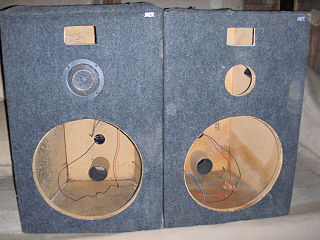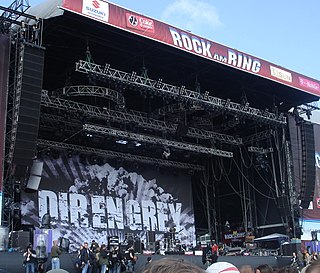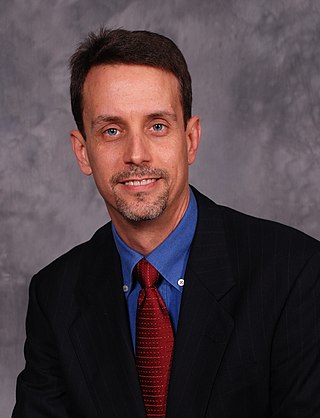
A subwoofer is a loudspeaker designed to reproduce low-pitched audio frequencies, known as bass and sub-bass, that are lower in frequency than those which can be (optimally) generated by a woofer. The typical frequency range that is covered by a subwoofer is about 20–200 Hz for consumer products, below 100 Hz for professional live sound, and below 80 Hz in THX-certified systems. Thus, one or more subwoofers are important for high-quality sound reproduction as they are responsible for the lowest two to three octaves of the ten octaves that are audible. This very low-frequency (VLF) range reproduces the natural fundamental tones of the bass drum, electric bass, double bass, grand piano, contrabassoon, tuba, in addition to thunder, gunshots, explosions, etc.

A loudspeaker is a combination of one or more speaker drivers, an enclosure, and electrical connections. The speaker driver is an electroacoustic transducer that converts an electrical audio signal into a corresponding sound.

Surround sound is a technique for enriching the fidelity and depth of sound reproduction by using multiple audio channels from speakers that surround the listener. Its first application was in movie theaters. Prior to surround sound, theater sound systems commonly had three screen channels of sound that played from three loudspeakers located in front of the audience. Surround sound adds one or more channels from loudspeakers to the side or behind the listener that are able to create the sensation of sound coming from any horizontal direction around the listener.

A horn loudspeaker is a loudspeaker or loudspeaker element which uses an acoustic horn to increase the overall efficiency of the driving element(s). A common form (right) consists of a compression driver which produces sound waves with a small metal diaphragm vibrated by an electromagnet, attached to a horn, a flaring duct to conduct the sound waves to the open air. Another type is a woofer driver mounted in a loudspeaker enclosure which is divided by internal partitions to form a zigzag flaring duct which functions as a horn; this type is called a folded horn speaker. The horn serves to improve the coupling efficiency between the speaker driver and the air. The horn can be thought of as an "acoustic transformer" that provides impedance matching between the relatively dense diaphragm material and the less-dense air. The result is greater acoustic output power from a given driver.

Wave field synthesis (WFS) is a spatial audio rendering technique, characterized by creation of virtual acoustic environments. It produces artificial wavefronts synthesized by a large number of individually driven loudspeakers from elementary waves. Such wavefronts seem to originate from a virtual starting point, the virtual sound source. Contrary to traditional phantom sound sources, the localization of WFS established virtual sound sources does not depend on the listener's position. Like as a genuine sound source the virtual source remains at fixed starting point.

A loudspeaker enclosure or loudspeaker cabinet is an enclosure in which speaker drivers and associated electronic hardware, such as crossover circuits and, in some cases, power amplifiers, are mounted. Enclosures may range in design from simple, homemade DIY rectangular particleboard boxes to very complex, expensive computer-designed hi-fi cabinets that incorporate composite materials, internal baffles, horns, bass reflex ports and acoustic insulation. Loudspeaker enclosures range in size from small "bookshelf" speaker cabinets with 4-inch (10 cm) woofers and small tweeters designed for listening to music with a hi-fi system in a private home to huge, heavy subwoofer enclosures with multiple 18-inch (46 cm) or even 21-inch (53 cm) speakers in huge enclosures which are designed for use in stadium concert sound reinforcement systems for rock music concerts.

Cabasse is a French audio manufacturer founded by Georges Cabasse (1928-2019) in 1950. It is mainly known for its home loudspeakers but has also produced professional audio speakers for studio recording or sound reinforcement in theatres and power amplifiers. The company is now part of a larger group called Veom Group.
David "Rat" Levine is the founder of Rat Sound and Sound Tools, a sound system designer, sound consultant and live sound engineer for many well-known artists such as Black Flag, the Red Hot Chili Peppers, Pearl Jam, Rage Against the Machine and Blink-182. Rat ran sound for the first Warped Tour in 1995, and has served annually as sound system provider at Coachella since its founding in 1999.

An acoustic transmission line is the use of a long duct, which acts as an acoustic waveguide and is used to produce or transmit sound in an undistorted manner. Technically it is the acoustic analog of the electrical transmission line, typically conceived as a rigid-walled duct or tube, that is long and thin relative to the wavelength of sound present in it.

Meyer Sound Laboratories is an American company based in Berkeley, California that manufactures self-powered loudspeakers, multichannel audio show control systems, electroacoustic architecture, and audio analysis tools for the professional sound reinforcement, fixed installation, and sound recording industries.

A line array is a loudspeaker system that is made up of a number of usually identical loudspeaker elements mounted in a line and fed in phase, to create a near-line source of sound. The distance between adjacent drivers is close enough that they constructively interfere with each other to send sound waves farther than traditional horn-loaded loudspeakers, and with a more evenly distributed sound output pattern.

Polk Audio is an American manufacturer of audio products best known for its home and automobile speakers. The company also produces a wide range of other audio products, such as amplifiers and FM tuners. The company's headquarters is in San Diego, California. In 2006, it was bought by Directed Electronics. Polk Audio has also introduced smart speakers for Google Assistant and Amazon Alexa.
Acoustic enhancement is a subtle type of sound reinforcement system used to augment direct, reflected, or reverberant sound. While sound reinforcement systems are usually used to increase the sound level of the sound source, acoustic enhancement systems are typically used to increase the acoustic energy in the venue in a manner that is not noticed by the audience. The correctly installed systems replicate the desired acoustics of early reflections and reverberation from a room that is properly designed for acoustic music. An additional benefit of these systems is that the room acoustics can be changed or adjusted to be matched to the type of performance. The use of acoustic anhancement as electronic architecture offers a good solution for multi-use performance halls that need to be "dead" for amplified music, and are used occasionally for acoustic performances. These systems are often associated with acoustic sound sources like a chamber orchestra, symphony orchestra, or opera, but have also found acceptance in a variety of applications and venues that include rehearsal rooms, recording facilities conference rooms, sound stages, sports arenas, and outdoor venues.
KEF is a British company specialising in the design and production of a range of high-end audio products, including HiFi speakers, subwoofers, architecture speakers, wireless speakers, and headphones. It was founded in Maidstone, Kent, in 1961 by a BBC engineer named Raymond Cooke (1925–1995). In 1992, the Hong Kong–based Gold Peak Group acquired KEF; and GP Acoustics, a member of Gold Peak, now owns the company. KEF continues to develop and manufacture its products in Maidstone.

NTi Audio AG is a manufacturer of test and measurement instruments for acoustics, audio and vibration applications. With headquarters in Schaan, Liechtenstein, the company specializes in end-of-line audio testing for manufacturing quality control purposes, provides instruments for testing public address systems in safety-critical environments and also produces handheld Audio Analyzers and generators aimed at the professional audio industry.
The ZiiSound, Inspire and Creative Wireless Speakers is a range of wireless speakers by Creative Technology, which utilizes Bluetooth technology and apt-X audio codec for high-quality wireless streaming of audio.

David W. Gunness is an American audio engineer, electrical engineer and inventor. He is known for his work on loudspeaker design, especially high-output professional horn loudspeakers for public address, studio, theater, nightclub, concert and touring uses.

Charles Emory Hughes II is an American inventor and audio engineer. He is known for his work on loudspeaker design, and the measurement of professional audio sound systems. Hughes first worked for Peavey Electronics designing loudspeakers and horns where he was granted a patent for the Quadratic-Throat Waveguide horn used in concert loudspeakers. He worked for Altec Lansing for two years as chief engineer for the pro audio division and was granted two more patents. In 2021, Hughes was hired by Biamp as principal engineer.
Thomas J. Danley is an American audio engineer, electrical engineer and inventor, the holder of multiple patents for audio transducers, especially high-linearity, high-output professional horn loudspeaker systems. Danley first gained notice in the 1980s with his novel servomotor-driven subwoofer systems used to reproduce very low frequencies in concert tours and theme parks. In 2000 he advanced the implementation of multiple-entry horns in 2000 with several designs led by the SPL-td1, a seven-driver loudspeaker. In 2005, he started a new company, Danley Sound Labs, through which he patented further technologies and produced a wide variety of loudspeaker models based on these technologies.

Fulcrum Acoustic is an American manufacturer of professional loudspeakers, including permanent-installation loudspeakers, portable loudspeakers, subwoofers, line arrays, stage monitors, and studio reference monitors. Their research and development offices and production facilities are located in Whitinsville, Massachusetts while their administrative offices are in Rochester, NY. Fulcrum Acoustic products are sold through an international distribution network and are deployed in houses of worship, sports venues, hospitality venues, concert halls, music festivals, theaters, and nightclubs.















